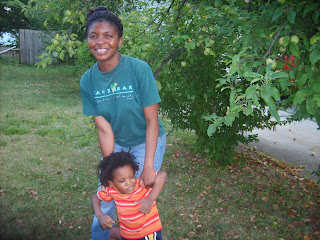Monday, August 25, 2008
Sunday, August 24, 2008
Friday, August 22, 2008
"Wireless electricity could change the world"

Intel chief technology officer Justin Rattner demonstrated a Wireless Energy Resonant Link as he spoke at the California firm's annual developers forum in San Francisco.
Electricity was sent wirelessly to a lamp on stage, lighting a 60 watt bulb that uses more power than a typical laptop computer.
Most importantly, the electricity was transmitted without zapping anything or anyone that got between the sending and receiving units.
"The trick with wireless power is not can you do it; it's can you do it safely and efficiently," Intel researcher Josh Smith said in an online video explaining the breakthrough.
"It turns out the human body is not affected by magnetic fields; it is affected by elective fields. So what we are doing is transmitting energy using the magnetic field not the electric field."
Examples of potential applications include airports, offices or other buildings that could be rigged to supply power to laptops, mobile telephones or other devices toted into them.
The technology could also be built into plugged in computer components, such as monitors, to enable them to broadcast power to devices left on desks or carried into rooms, according to Smith.
"Initially it eliminates chargers and eventually it eliminates batteries all together," analyst Rob Enderle of Enderle Group said of Intel's wireless power system.
"That is potentially a world changing event. This is the closest we've had to something being commercially available in this class."
Previous wireless power systems consisted basically of firing lightning bolts from sending to receiving units.
Smith says Intel's wireless power system is still in an early stage of development and much research remains before it can be brought to market.
Rattner spoke of technological transformations he expects by the year 2050.
"You'd like to cut the last cord," Smith said.
"It's great that we have wireless email and wireless internet and stuff like that but at the end of the day it would be nice to have wireless recharge as well."
Tuesday, August 19, 2008
no air lyrics
Monday, August 18, 2008
My camera officially stopped functioning.
Saturday, August 9, 2008
Monday, August 4, 2008
Oh yes I did it on my first try!

Out Yesterday by myself!














